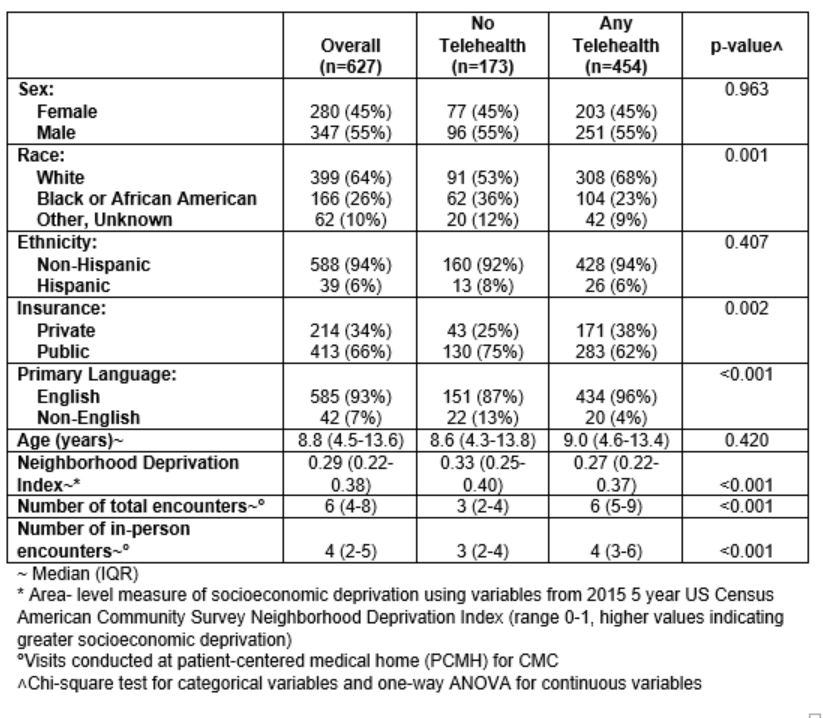Telemedicine/EHR/Medical Informatics
Telemedicine/EHR/Medical Informatics 2
634 - Patient Level Factors Associated with Telemedicine Use in a Tertiary Complex Care Center
Publication Number: 634.455
- MP
Marie Pfarr, MD (she/her/hers)
Assistant Professor
Childrens Hospital of Alabama
Vestavia Hills, Alabama, United States
Presenting Author(s)
Background: Telemedicine may offer a novel approach to improve care coordination and access to care for children with medical complexity (CMC), although there lies concern that this care modality may inadvertently widen disparities. Currently, little is known about which CMC families are engaging in telemedicine services and which factors facilitate versus hinder telemedicine use.
Objective: To examine telemedicine utilization in a cohort of CMC during the COVID-19 pandemic.
Design/Methods: Single retrospective study of CMC who received care at a patient-centered medical home (PCMH) for CMC from March 22, 2020 to January 1, 2022. Our primary outcome of interest was the utilization of telemedicine; patients were characterized as either having telemedicine utilization versus no utilization during the study period. Predictors of interest included medical complexity (number of complex chronic conditions and technology dependence), race, primary insurance, primary language, and a neighborhood level measure of socioeconomic deprivation (deprivation index). To examine the hypothesized association between telemedicine utilization and the predictors defined a-priori, we fit a multivariable logistic regression model. A second model included the total number of clinic encounters as an additional covariate.
Results:
Of the 627 CMC patients who received care during our study period, 173 patients (28%) had no telemedicine utilization and 454 patients (72%) used telemedicine. The majority of patients were male (55%), White (64%), non-Hispanic (94%), publicly insured (66%), and English speaking (93%) (Table 1). In the model including covariates defined a-priori, telemedicine use was associated with the number of complex chronic conditions (adjusted odds ratio [aOR] 1.12, 95% CI: 1.02-1.24). Black (aOR 0.63, 95% CI: 0.42-0.96), publicly insured (aOR 0.71, 95% CI: 0.46-1.10), and non-English speaking patients (aOR 0.26, 95% CI: 0.13-0.50) had significantly lower odds of using telemedicine than White, privately insured, and English-speaking patients respectively (Table 2). However, when additionally controlling for total number of encounters, only non-English speaking CMC had significantly decreased odds of using telemedicine (aOR 0.23, 95% CI: 0.12-0.46) (Table 2).
Conclusion(s): Our study findings have important implications as we continue to better understand telemedicine utilization in CMC and examine potential disparities in its use. Perhaps more importantly, our findings also have implications regarding CMC access and utilization of healthcare generally. 
.jpg)
